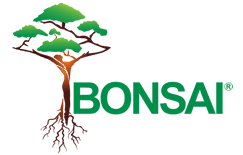This is the beginning of a series of letters to a friend on effectively taking a sabbatical. I share my strategies, successes, challenges, and insights I gleaned. Even if you don’t have an extended period as I did, these tips should be helpful as you navigate periods of stepping away and developing your insights about navigating life. After the first letter our puppy died in a tragic accident. We were heartbroken, and I had no margin for blogging – the reason for the gap in posting.
One of the best pieces of advice going into my sabbatical was from Pastor Dennis McFadden. Our dear friend said that after your sabbatical, people will always ask, ‘Was it good?” and before the sabbatical is the time to think about how you will evaluate it. How do you know if it was good unless you know what you hoped to accomplish?
Brilliant! So, I set about identifying objectives as any consultant worth their salt would do. Ok, so I did it on steroids. I also identified lead measures, and deliverables/outcomes and connected each objective to a person’s value (as any consultant worth their salt would do). Stop laughing!
Here’s the deal: just like your sabbatical will provide clarity about life, your objectives will clarify your sabbatical. The deeper dive into each objective ensures it is well thought out, achievable, and connected to who you are.
Writing these objectives out BEFORE your sabbatical will protect your time, focus your energy (even if just energy to rest), and give you the permission you need to live life differently. It will make time intentional so you don’t wind up just doing things the same old way and end up at the end of your time with the same person doing the same old things.
It is like strategic planning for a company. A big part of the value is getting the leadership team to wrestle with complicated issues, clarify the organization’s mission and strategy, and identify essential actions. Much of the value resides in the plan’s development.
Here is an examples from my plan.
- Obejective: Feeling rested and downshifting
- Lead measure: number of hours doing slower activities
- Deliverables: No longer tired, reducing my overall pace
- Objective: Try new things
- Lead measure: number of new things I try
- Deliverables: Confidence, learning what I like
- Objective: Minimal focus on business but still supporting clients well
- Lead measure: hours worked not on the specified “work days,” number of deadlines missed/client needs not met
- Deliverable: Ability to stay in the right brain (artistic side)
A lead measure quantifies actions required to achieve an objective (like the number of exercise minutes). People typically focus on “lag measures” taken after the activity is done (like pounds lost). Focusing on lead measures (exercise, which you can control) vs. lag measures (pounds lost) produces more successful results.
On the first measure, I could have measured time not working, hours doing fun things, etc. But I wanted to slow my pace down to rest. If I did that, I believed the exhaustion would lift. I also felt that doing so would contribute to my values of being bold and wise and cultivating beauty (in myself, others, and around me).
The measures are helpful because they ensured the hours I spent doing things were counted toward items in that column. I was more intentional with my doing. For example, if I had just hoped to try new things, that may or may not have happened. But, knowing I needed to up the number of new things I tried, I was looking for and taking the road, never-traveled option and stepping into my comfort zone.
Realizing my objective to minimize client support kept me from returning to the office, which was my comfort zone. That was the easy choice because I could do it well. Trying new things, doing art, etc., were the more challenging choices. So, measuring and thus minimizing my time outside my two official work days each month kept me focused on my plan.
In hindsight, I probably had too many objectives (there were nine – seriously). However, it established a pathway for moving forward, a way of acting very different from my previous 12 months. And they all focused on my primary goal—to figure out what I wanted to do next.





 Britta burrus design.
Britta burrus design.